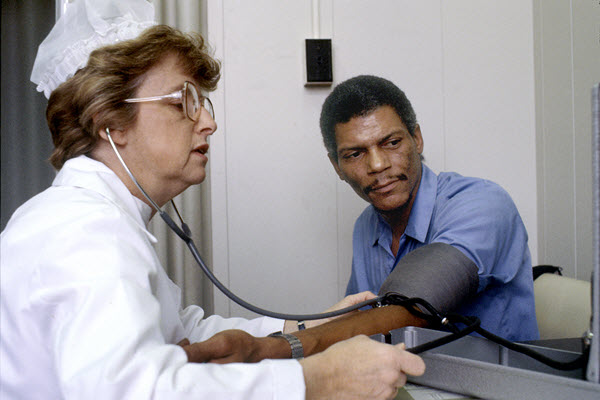Examining a sample nursing care plan is beneficial for nursing students. It helps them develop their skills in creating care plans for their patients. However, it takes time to learn writing one quickly. With plenty of practice, a budding nurse can master writing care plans within a short period of time.
Why Is A Nursing Care Plan Important?
Creating a nursing care plan is often an unwanted task for most nursing students and yet, it is the core of nursing practice.

It’s important because of the following reasons:
- It provides focus for individualized patient care. It gives direction on the flow of care planned for the patient.
- It makes prioritization easier. Creating a care plan enables the nurse to make a list of diagnoses for the patient. Through the list, it is easy to identify the most important problem that needs immediate intervention first.
- It promotes continuity of care. A nursing care plan is a good communicating tool for patient care between nurses. Nurses assigned to the patient continuously update the plan as they carry out planned interventions in their respective shifts.
- It gives a quick glimpse on the intensity of care the patient needs. It serves as a guide in anticipating the patient’s healthcare needs. Patients with intensive healthcare demands may need nurses with specialized skills or training.
- Creating care plans enable nurses to hone their documentation skills. They improve their skills in documenting healthcare actions as they outline assessments and interventions made for the patient.
![]()
Common Format Of A Nurse Plan
Healthcare institutions have different care plan formats. The most common format used includes diagnosis, data, expected outcomes, interventions, and evaluation.
Diagnosis – This is the topmost healthcare need of the patient. It focuses on health improvement and overall well-being of the patient. The diagnosis can be further linked to related precipitating causes like problematic situations and conditions.
Example:
- Imbalanced nutrition: less than body requirements related to inability to ingest food
- Activity intolerance related to tissue hypoxia associated with anemia
- Risk for infection related to decreased leukocyte function
Data – This is a list of assessment that supports the nursing diagnosis made for the patient. It serves as the supporting data for the nursing diagnosis made.
Example:
- Generalized weakness
- Tachypnea
- Delayed wound healing
Expected Outcomes – These are the goals for the nursing care plan made. The care plan made is considered successful once the expected outcomes are met.
Example:
- Before discharge, patient will demonstrate nutritional ingestion sufficient for daily metabolic needs as manifested by improving weight measurement and enhanced energy levels.
- At the end of the shift, patient will verbalize understanding of identified risk factors. Before discharge, patient will exhibit physical activity tolerance as evidenced by stable vital signs during the activity.
Interventions – These are the actions that will help achieve the desired outcomes for the patient. The planned interventions aim to provide solutions for the diagnosis made. In traditional nursing care plans especially those being taught to nursing students, the interventions have corresponding rationales or reasons for implementation.
Example:
- Look for signs of unwillingness to cooperate. (Rationale: It reflects the need to focus on educating the patient about the extent of his condition.)
- Promote proper positioning and body mechanics. (Rationale: These techniques conserve energy and reduces the risk of accidental injuries.)
- Clean and change wound dressings. (Rationale: To prevent development of wound infection related to poor hygiene and inappropriate wound care.)
Evaluation – This determines the effectiveness of the interventions implemented. It also guides the next nurse in creating or updating the patient’s nursing care plan for the next shift.
Example:
- Patient verbalized increase in appetite.
- Patient tolerated walking around the bed with stable vital signs.
- Patient exhibited no impending signs of wound infection as manifested by intact skin integrity around the incision site.
![]()
Simplest Steps on How to Write a Badass Nursing Care Plan

#1: Data collection
This is where assessment kicks in. Do a head-to-toe assessment. Obtain the patient’s history. Include abnormal diagnostic test results. Correlate the data gathered with the documented signs and symptoms of the patient.
#2: Analyzation
Analyze and interpret the data collected. Is there any health problem that needs to be prioritized immediately? Analyzing data collected will help you in finding a focus for your nursing care plan. It will also help you construct your nursing diagnosis correctly.
#3: Organize information
Put all the relevant information together after selecting your focus problem. Align them in care plan format. Some terms may need to be translated into more formal medical phrases. It is easier to formulate interventions once all the information are organized in the care plan template.
#4: Validate with resources
This step is recommended for student nurses. Validate your care plan draft with your resources. Resources frequently used for care plans include NANDA, NOC and NIC. Validating the care plan created with existing resources will help correct possible mistakes and improve documentation skills.
#5: Review
Review your care plan after you finish finalizing data input. Remember that nursing care plans are also legal documents that can be used in court if any legal problems arise. Ensure clarity and accuracy of the care plan.
![]()
Tips in Writing a Nursing Care Plan

Practice often – Writing a sample nursing care plan everyday helps polish documentation skills. Seasoned nurses can write good nursing care plans quickly because of the years of experience they have in documenting patient care. After plenty of practice, you will memorize nursing diagnoses and interventions by heart.
Learn from resources – There are plenty of resources for nursing care plans. The universally known reference among student nurses is the North American Nursing Diagnosis Association or NANDA. They produced many types of resources for creation of nursing care plans. Their list of nursing diagnoses is comprehensive and updated annually.
Rev up assessment and prioritization skills – Creating a quality nursing care plan starts at assessment. You cannot identify the patient’s health problems without any proper assessment conducted. Prioritization is the next important step after identifying patient’s health problems. It is easy to construct a nursing care plan if you have sufficient data obtained from assessment and prioritization.
Create your own nursing care plan template – There are many care plan templates available in the web. For ease of use, it is best to create your own care plan template. It is easier to master care plan writing if you will create your own template.
It takes time to polish documentation skills. Practice writing a sample nursing care plan often. Reading actual nursing care plans will be also helpful. Examine your colleagues’ care plans and learn from their writing style.



















